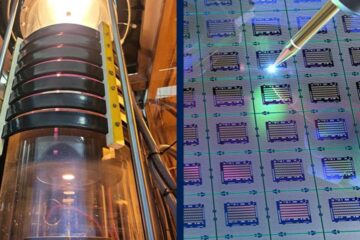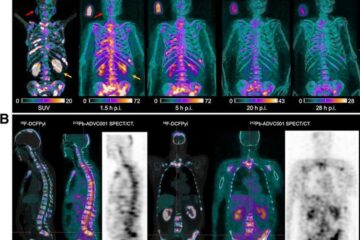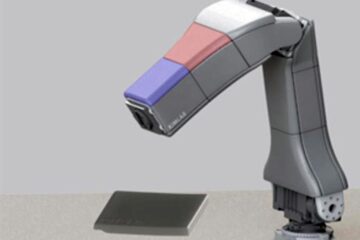Decline in snow cover spells trouble for many plants, animals

But in a warming world, winter and spring snow cover in the Northern Hemisphere is in decline, putting at risk many plants and animals that depend on the space beneath the snow to survive the blustery chill of winter.
In a report published May 2 in the journal Frontiers in Ecology and the Environment, a team of scientists from the University of Wisconsin-Madison describes the gradual decay of the Northern Hemisphere's “subnivium,” the term scientists use to describe the seasonal microenvironment beneath the snow, a habitat where life from microbes to bears take full advantage of warmer temperatures, near constant humidity and the absence of wind.
“Underneath that homogenous blanket of snow is an incredibly stable refuge where the vast majority of organisms persist through the winter,” explains Jonathan Pauli, a UW-Madison professor of forest and wildlife ecology and a co-author of the new report. “The snow holds in heat radiating from the ground, plants photosynthesize, and it's a haven for insects, reptiles, amphibians and many other organisms.”
Since 1970, snow cover in the Northern Hemisphere — the part of the world that contains the largest land masses affected by snow — has diminished by as much as 3.2 million square kilometers during the critical spring months of March and April. Maximum snow cover has shifted from February to January and spring melt has accelerated by almost two weeks, according to Pauli and his colleagues, Benjamin Zuckerberg and Warren Porter, also of UW-Madison, and John P. Whiteman of the University of Wyoming in Laramie.
“The winter ecology of Wisconsin and the Upper Midwest is changing,” says Zuckerberg, a UW-Madison professor of forest and wildlife ecology. “There is concern these winter ecosystems could change dramatically over the next several years.”
As is true for ecosystem changes anywhere, a decaying subnivium would have far-reaching consequences. Reptiles and amphibians, which can survive being frozen solid, are put at risk when temperatures fluctuate, bringing them prematurely out of their winter torpor only to be lashed by late spring storms or big drops in temperature. Insects also undergo phases of freeze tolerance and the migrating birds that depend on invertebrates as a food staple may find the cupboard bare when the protective snow cover goes missing.
“There are thresholds beyond which some organisms just won't be able to make a living,” says Pauli. “The subnivium provides a stable environment, but it is also extremely delicate. Once that snow melts, things can change radically.”
For example, plants exposed directly to cold temperatures and more frequent freeze-thaw cycles can suffer tissue damage both below and above ground, resulting in higher plant mortality, delayed flowering and reduced biomass. Voles and shrews, two animals that thrive in networks of tunnels in the subnivium, would experience not only a loss of their snowy refuge, but also greater metabolic demands to cope with more frequent and severe exposure to the elements.
The greatest effects on the subnivium, according to Zuckerberg, will occur on the margins of the Earth's terrestrial cryosphere, the parts of the world that get cold enough to support snow and ice, whether seasonally or year-round. “The effects will be especially profound along the trailing edge of the cryosphere in regions that experience significant, but seasonal snow cover,” the Wisconsin scientists assert in their report. “Decay of the subnivium will affect species differently, but be especially consequential for those that lack the plasticity to cope with the loss of the subnivium or that possess insufficient dispersal power to track the retreating range boundary of the subnivium.”
As an ecological niche, the subnivium has been little studied. However, as snow cover retreats in a warming world, land managers, the Wisconsin researchers argue, need to begin to pay attention to the changes and the resulting loss of habitat for a big range of plants and animals.
“Snow cover is becoming shorter, thinner and less predictable,” says Pauli. “We're seeing a trend. The subnivium is in retreat.”
—Terry Devitt, 608-262-8282, trdevitt@wisc.edu
Media Contact
More Information:
http://www.wisc.eduAll latest news from the category: Ecology, The Environment and Conservation
This complex theme deals primarily with interactions between organisms and the environmental factors that impact them, but to a greater extent between individual inanimate environmental factors.
innovations-report offers informative reports and articles on topics such as climate protection, landscape conservation, ecological systems, wildlife and nature parks and ecosystem efficiency and balance.
Newest articles

Silicon Carbide Innovation Alliance to drive industrial-scale semiconductor work
Known for its ability to withstand extreme environments and high voltages, silicon carbide (SiC) is a semiconducting material made up of silicon and carbon atoms arranged into crystals that is…

New SPECT/CT technique shows impressive biomarker identification
…offers increased access for prostate cancer patients. A novel SPECT/CT acquisition method can accurately detect radiopharmaceutical biodistribution in a convenient manner for prostate cancer patients, opening the door for more…

How 3D printers can give robots a soft touch
Soft skin coverings and touch sensors have emerged as a promising feature for robots that are both safer and more intuitive for human interaction, but they are expensive and difficult…





















